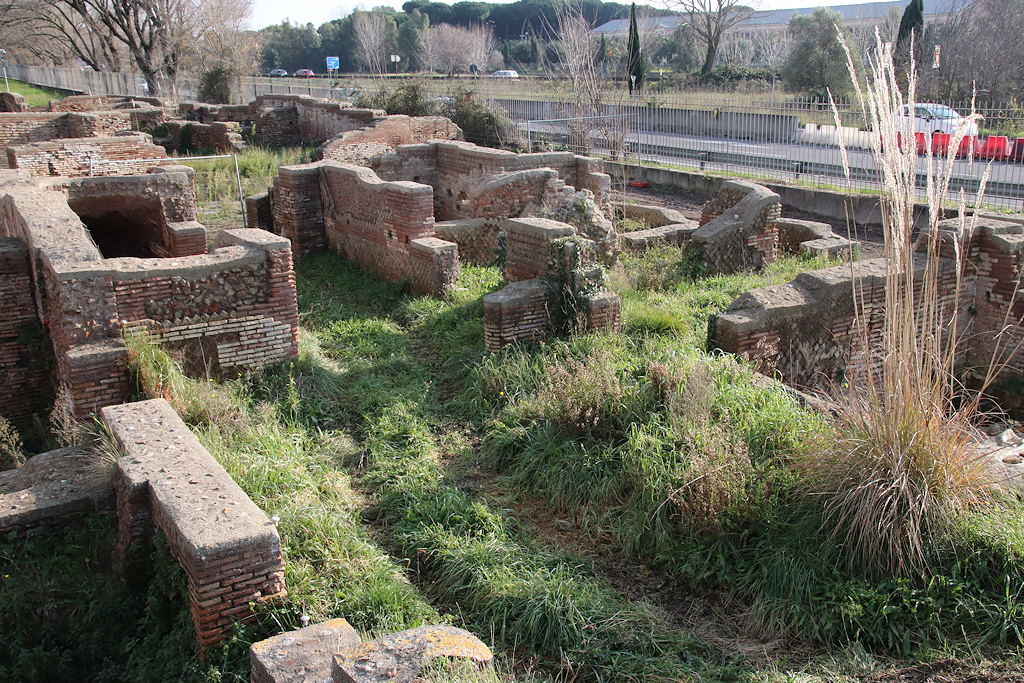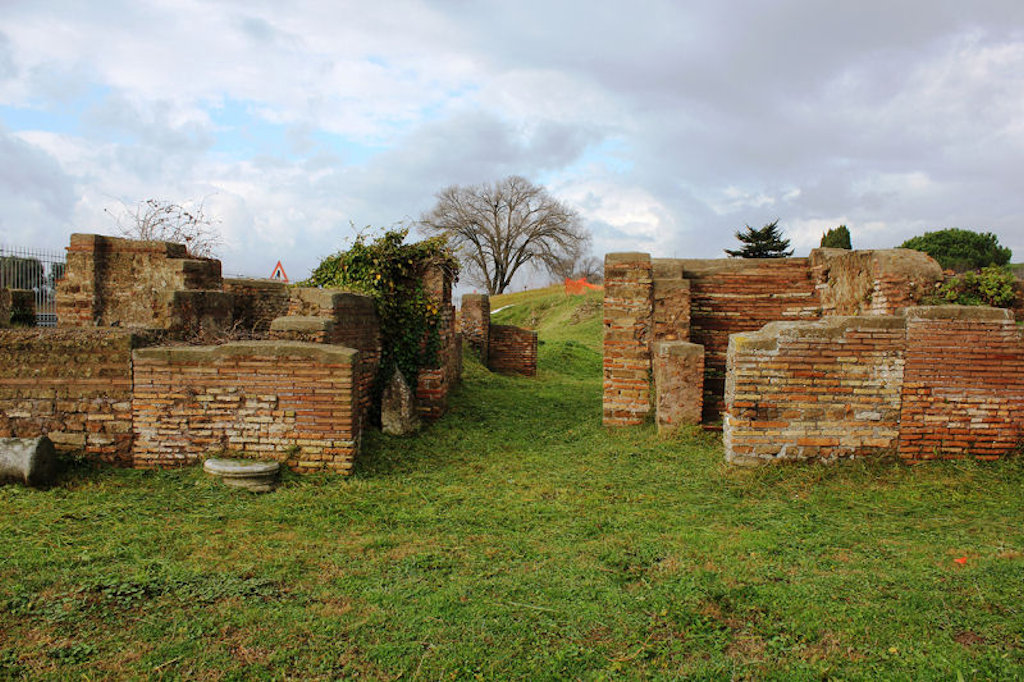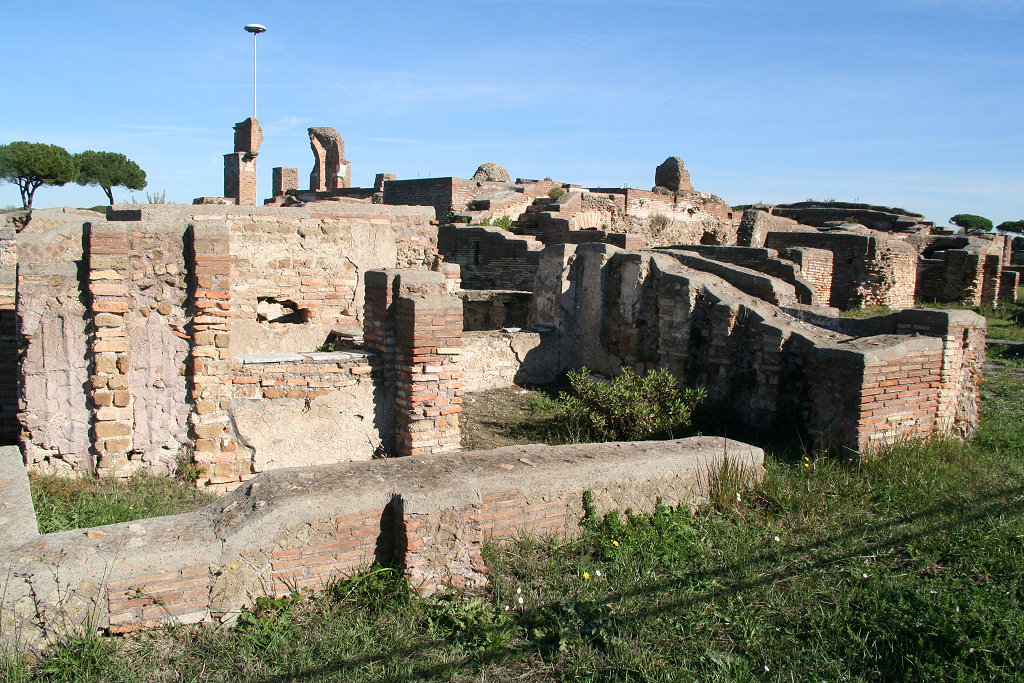The House of the Two Staircases and the Baths of the Skeleton have been excavated only partially: in 1938-1942, 1971 and 2010-2014 (by the Ostia Marina Project, University of Bologna, under the direction of Massimiliano David). It is on the intersection of Via della Marciana (to the east) and the Via Severiana (to the south). The house (previously known as House along Via della Marciana), has received this name in 2015 due to the peculiar planimetrical layout of the ground floor, which has a big east-west corridor dividing the building in two wings, with two stairs leading to the upper floors. The Baths of the Skeleton are a little bath complex built within the house during the fourth century AD. This balneum has received its name after the discovery, in 2014, of a human skeleton in room 15.
Plan of the building with the main building phases.
In orange the Hadrianic phase, in yellow the phase of the Severan period,
in green the phase of the late fourth century with the baths (rooms 11-19, 25).
David et al., seminar May 13 2014, fig. 4.The house is a building with both commercial and residential functions. The stairwells that give the name to the building are rooms 5 and 6. Some brick stamps found in place provide 134 AD as a terminus post quem for the construction. Alterations have taken place in the Severan period, when the quadrangular room on Via della Marciana was divided into two shops (tabernae) by walls in opus latericium (rooms 3 and 4). The archaeological research has shown another phase that lasted until at least the early fifth century, with a series of rearrangements that testify to a new use of space for crafts and commercial activities, perhaps related to metalworking.
The baths are a small bath complex (balneum) built within the south-east part of the house during the second half of the fourth century AD. All of the preserved part of the balneum seems to be related to the heated area. Rooms 12 and 13 are two little tubs, in rooms 11 and 18 are hypocausts and tubuli of the heating system. In room 14 are three ovens (praefurnia), rooms 15 and 16 were service rooms.




